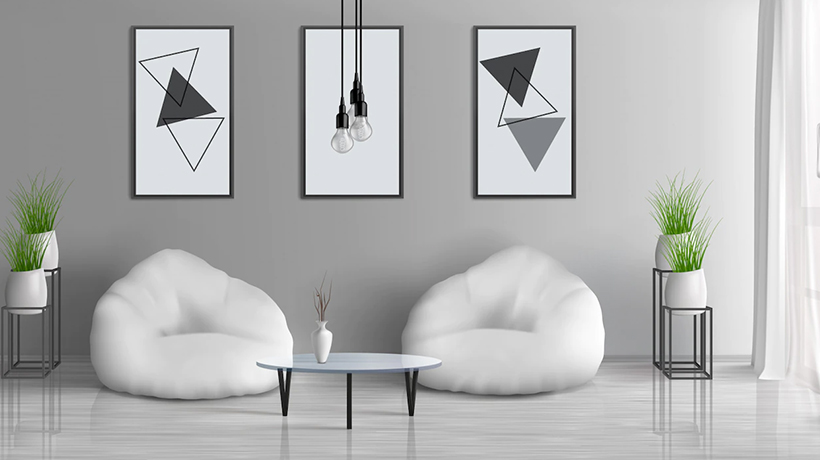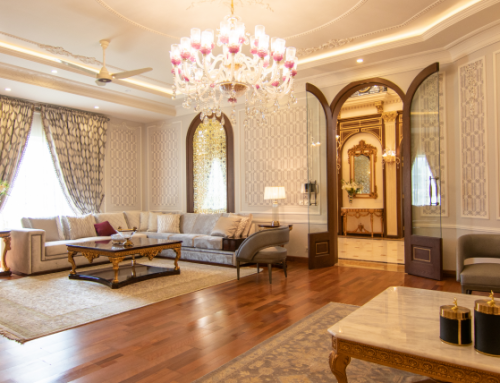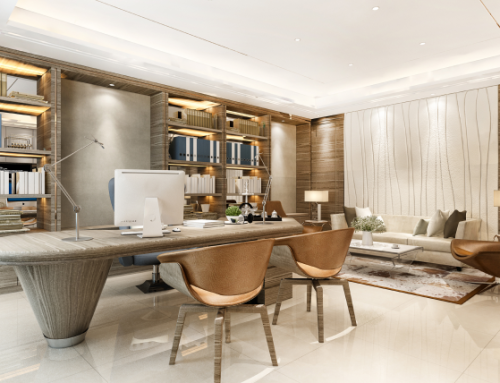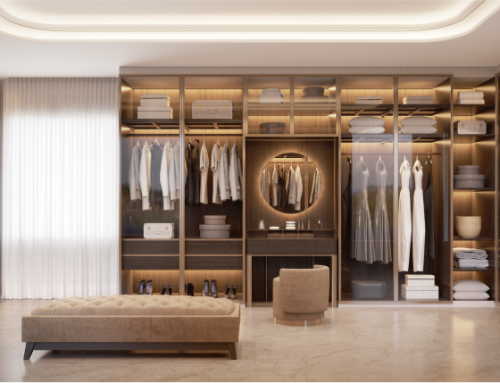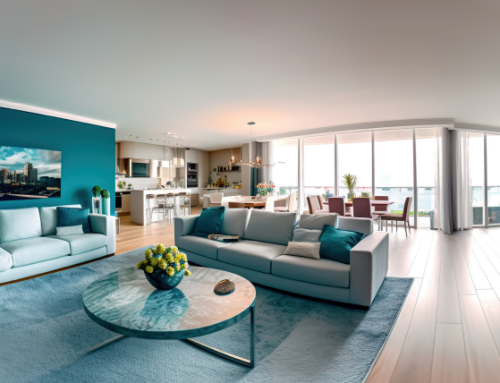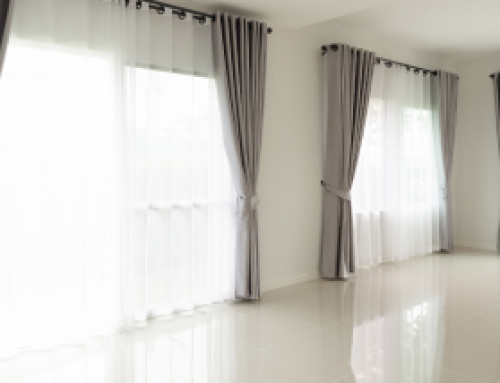Wall colour ideas for the living room
The living room is one of the most important areas of a home, as one tends to spend most of the time here, with family members. It is also the place where home owners entertain guests. You can pick earthy or neutral shades for this area, including aqua mint, French vanilla, emerald green or white. If you want regular colours for your home, you can pick grey, blue or beige. Black is an unusual colour for the living room but you can use it, if you want to add a non-obvious element to your living room.
Wall colour ideas for the dining room
If you want your dining room to look compact and cosy but full of energy, you can pick warmer tones of red and yellow. If you want to make the room look bigger, opt for brighter tones of green, yellow or purple colours for the dining room and perk it up with drapes in complementing colours. You can also use metallic wallpaper, to add some glam to the room.
Wall colour ideas for the study room
While red is the perfect colour for improving focus and concentration, you can also experiment with different shades of green, deep greys or silver, as these shades are said to improve creativity and help in focusing. Orange and yellow are other preferred colours for the study room, as it increases alertness.
Wall colour ideas for children’s rooms
Pale pink, baby blue or softer tones of yellow, are the most popular colours for children’s rooms. Since these are soothing hues, they will have a calming effect on your child. Also, if you want to pick some unusual colours for the room, make sure you select a brighter shade, to add some enthusiasm.
Wall colour ideas for the bedroom
The bedroom should be painted in soothing colours, to make it the most calming place in your home. You can pick colours like lavender, soft green, pale blue, soft grey and deep blue, for your bedroom. You can also pick lighter tones of these colours or alternatively, you can select cream or white colour for your bedroom.
Wall colour ideas for the guest room
You can pick a combination of colours for decorating your guest room, such as eggshell hues, shades of lemon, creamy neutrals or sea colours. Additionally, a chocolate brown colour is a perfect selection for your guest room, to make it look cosy and comfortable. You can complement it with solid wood furniture, to make your guests feel welcome.
Wall colour ideas for the kitchen
Ideal colours for the kitchen include white, grey, yellow and green. These colours will make your kitchen appear bright. Warmer tones stimulate the appetite. So, you can select hot chilli or orange colour, to make your kitchen a foodie’s haven.
Wall colour ideas for the bathroom
Use any cooler tones of blue, green, or creamy white, to paint your bathroom into a relaxing zone of your home. Grey and pure white are other options, if you do not want to experiment. Pistachio is another modern colour tone that you can select, to convert your bathroom into a soothing space.
Wall colour ideas for the exterior
Choosing a perfect colour for the exteriors is equally difficult. The exterior look defines the personality of not just the house but also its occupants. Therefore, it has to be chosen, keeping in mind the overall vibe of the house. If the key theme is minimalism, you might want to keep the exterior simple and classy. You can opt for glass panels, along with brick tiles in different colours. Other than this, the latest trend is to use pop colours with a combination of deep blue or cream. While white is one of the most popular options to choose from, its maintenance and frequent white-washing will be an added expenditure for you.
Wall texture paints
Texture paint, unlike flat paint, gives a slightly rough and gritty look to your walls. This adds a rustic appeal to walls, which is far better as compared to wallpapers or any type of paint finish. To get this look, you can opt for simple paint swatches for a focal wall featuring beautiful textures. Since textured focal walls can add shadow, depth and structure to a bedroom in a beautiful and unique way, people prefer decorating the focal wall – usually the one behind the headrest – with textured paint.
Types of wall texture paints
Mosaic texture: This texture gives a tile-like appearance. It is achieved, using combing texture application techniques, where comb-like instruments or stencils are used to create patterns such as zigzags, checkerboards, wavy lines or swirls in wet paint, to attain the desired effect. Rustic texture: To give your bedroom a cool, raw feel, dip a rag into the paint, squeeze out the excess paint and roll it along the wall for a gorgeous, uneven look.
Brick texture: A brick texture can be created by applying a brick-like pattern over the focal wall, using a stencil roller, which can be dipped in thick paint and then rolled across the wall.
Marble texture: To give a Victorian look to your walls, opt for marble texture. This can be attained by the process of smooshing, where a glaze is applied to a wall, on which a plastic sheet is then placed, before it dries.
Faux animal skin: You can opt for faux crocodile wallpaper, to add texture to an otherwise clean, classic space. Dark colours with a little gloss over them, blend well with open spaces.
Neutral glasscloth: Such wallpapers bring out warmth, while also introducing texture, as it is made from natural fibers. Ideal for cozy settings, this is a must-have for a small living room.
Things to know about wall texture paint
- Usually, there are four types of texture paints: tactile, natural, artificial and visual. When combined with each other, these give more versatile options.
- It is important to scrub the walls with sandpaper before applying the texture paints, to get the optimum look. Applying primer is also important, to get the required finish.
- The textures can be easily made with simple paint strokes, rollers and stencils, or with materials like stone and wood.
- Before applying wall paint textures, it is mandatory to scrape the walls, to remove any glue, debris and other solid particles.
- Although there are several ways to scrape the walls, the easiest way is to use sugar soap solution. You can mix some amount of sugar soap with water and rub it over the walls a couple of times to end up getting a clean wall.
Types of paints and finish for home wall colours
Once you have decided the wall colours, you have to be sure which paint is best for your home. The type of paint you choose is as important as the colour and can have a major impact on the final look of your room, the quality of the paint job and the overall vibe that you want to have. To decide the type of paint, it is important to consider factors such as how big the room is, where the room is located and what kind of look you are planning to achieve. Here are different types of wall paints and their advantages and disadvantages:
| Type of wall paint | Advantages | Disadvantages |
| Water-based paints | Easy to use, doesn’t require a pre-treatment, quick drying, can be used on almost all surfaces, doesn’t fade in sunlight. | Don’t last long, doesn’t give a rich look, can peel from dampened walls. |
| Oil-based paints | Gives a glossy look, good for high-moisture rooms, easy ‘leveling’, durable finish. | Takes too long to dry, Very hard to wash and has a messy process. |
| Type of wall paint finish | Features |
| Matte paint | Least reflective sheen, velvety texture, hides imperfections in walls and offers great depth of colour. |
| Eggshell and satin paint | Improved durability, somewhat reflective and easy to clean. |
| Semi-gloss and gloss paint | Most reflective, ideal for accent walls, highly durable and easiest to clean. |
Where to use which type of paint colour at your home
| Type of paint | Area |
| Acrylic paint | Ceiling and living room walls. |
| Mid-sheen emulsions like silk or velvet | For rooms which get medium or low sunlight. |
| Low-sheen paints | Ceilings and rooms which get direct sunlight. |
| Matte finish | Deep-coloured walls which get more than usual sunlight. |
| Semi-gloss paint | For bathrooms and kitchens or areas which are exposed to humidity. |
| High-gloss paint | For wooden and metal surfaces. |
| Teflon surface protector paints | Kids’ room or areas that are prone to staining. |
| Weather-coat external paint | Exteriors. |
Tips for choosing the perfect colours for your home
1. Stick to your favourite colours: It will be your personal guide to choosing colours. For example, simply open your wardrobe and understand your subconscious preference and choose the colour that your mind picks.
2. Use existing furniture to select an accent colour: Choose a quieter shade or complementary shade, to accentuate your furniture. For instance, if you have a yellow lamp, you can pick a very light shade of lemon in the backdrop, to let the lamp take more dominance.
3. Consider the room’s size: If you want to make your room look bigger, opt for lighter shades but if you want the room look cosy, choose a darker shade.
4. Keep the overall colour theme in mind: Take the help of a colour shade card, when deciding colours for different parts of your home. There should be a proper flow from room-to-room.
5. Take note of the lighting: Keep in mind the kind of lighting your room will have, before you choose a wall paint colour. While natural light shows the true colour of the paint, incandescent lights bring up the warmer tones, while fluorescent lights highlight sharp blue tones.
6. Room function and mood setting: Consider both these factors, before deciding the colour. If you want the room to be a high-energy area, use warm tones but if you want to use the space for relaxing, consider cool colours such as blue and grey. Also, you can choose different levels of sheen according to how the room will be used.
7. Trial and error method: Use different paint samples in different parts of the wall, to pick the best colour. This method never fails as you can see how different wall paints will look like.
Trendy colour combinations for your home
| Any pastel shade | Pink, mauve and baby blue |
| Purple | Gunmetal grey |
| Soft pink | Turquoise |
| Aquarium blue | Grape |
| Blue | Yellow |
| Orange | White |
| Navy blue | White |
| Shades of grey | Monochrome grey |
| Cream | Aqua |
| Brown | Green |
Source – housing.com












